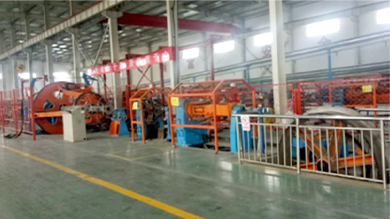11 月 . 01, 2024 05:31 Back to list
Understanding the Functionality of Swing Type Check Valves in Fluid Systems
Understanding Swing Type Check Valves A Comprehensive Overview
Swing type check valves are an essential component in many piping systems, primarily used to prevent backflow and ensure the unidirectional flow of liquids and gases. Their design is simple yet effective, making them a popular choice across various industries, including water treatment, oil and gas, chemical processing, and HVAC systems.
Design and Functionality
The primary feature of a swing type check valve is its hinged disc or flap, which swings open with the flow of fluid and closes when the flow reverses. This action prevents backflow, thereby protecting pumps and other equipment from potential damage. The valve is typically installed in horizontally oriented pipelines, but it can also function in vertical systems when oriented correctly.
Swing type check valves are available in various materials, including cast iron, stainless steel, and bronze, allowing them to be tailored to specific applications and environments. The choice of material is crucial as it determines the valve's durability and resistance to corrosion, pressure, and temperature variations.
Advantages
One of the primary advantages of swing type check valves is their low-pressure drop. Since the flow opens the valve, there is minimal resistance when liquid or gas passes through. This characteristic makes swing check valves highly efficient, providing an economical solution for backflow prevention without significantly affecting the overall pressure in the pipeline.
Additionally, swing type check valves are relatively easy to install and maintain. Their straightforward design means that they can often be cleaned or serviced without the need for complex tools or extensive downtime. This ease of maintenance is particularly valuable in industrial settings where operational efficiency is paramount.
swing type check valve

Applications
Swing type check valves are widely used in various applications. In water treatment facilities, they protect pumps by ensuring that water flows only in the intended direction. In oil and gas pipelines, these valves are crucial for maintaining pressure and preventing contamination of the products being transported.
Moreover, these valves play a significant role in HVAC systems, where they prevent water from flowing back into the cooling tower or boiler. Their reliability and efficiency make them indispensable in maintaining the integrity of fluid transport systems across many sectors.
Disadvantages
Despite their many advantages, swing type check valves are not without limitations. One significant drawback is their tendency to be affected by turbulence in the flow, which can lead to valve chatter or vibration. This can, in turn, result in wear and potential failure over time. Additionally, they are not suitable for low-flow applications, as the valve may not close completely, allowing some backflow.
Conclusion
Swing type check valves are a fundamental part of many fluid transport systems, providing a reliable means of preventing backflow and ensuring efficient operation. Their simple design, coupled with their effectiveness in various applications, makes them a preferred choice in many industries. However, it is essential to consider their limitations and ensure proper installation and maintenance to maximize their lifespan and performance. In a world where system efficiency is critical, swing type check valves serve as a robust solution for maintaining the integrity of fluid dynamics.
Share
-
Understanding the Differences Between Wafer Type Butterfly Valve and Lugged Butterfly ValveNewsOct.25,2024
-
The Efficiency of Wafer Type Butterfly Valve and Lugged Butterfly ValveNewsOct.25,2024
-
The Ultimate Guide to Industrial Swing Check Valve: Performance, Installation, and MaintenanceNewsOct.25,2024
-
Superior Performance with Industrial Swing Check Valve: The Essential Valve for Any SystemNewsOct.25,2024
-
Industrial Swing Check Valve: The Ideal Solution for Flow ControlNewsOct.25,2024
-
You Need to Know About Industrial Swing Check Valve: Functionality, Scope, and PerformanceNewsOct.25,2024